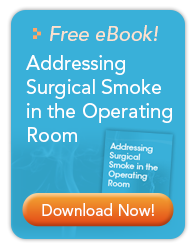 As a veterinary professional, you work in a specialized field with specialized equipment. When it comes to outfitting your hospital or operating room with the tools of the trade, there are some essentials. Here's a look at a few of the basic tools any operating room utilizing the latest electrosurgical techniques should have on hand.
As a veterinary professional, you work in a specialized field with specialized equipment. When it comes to outfitting your hospital or operating room with the tools of the trade, there are some essentials. Here's a look at a few of the basic tools any operating room utilizing the latest electrosurgical techniques should have on hand.
Cauteries – For coagulation of a superficial lesion, a simple cautery device can provide pinpoint hemostasis. These are usually small disposable, penlight shaped, battery operated, devices with either a high temperature tip of 2200° F or, a low temperature tip which can range from 850° F to 1300° F. There is even a variable low temperature cautery which can be adjusted from as low as 700° F up to 1100° F. But the Change-a-tip cautery system with its replaceable batteries and tips is the most popular among veterinarians.
High frequency desiccator – For skin lesions requiring a more advanced approach, you may wish to look at using a high frequency desiccator device which fulgurates tissue, causing it to dry out and slough off, and coagulates blood vessels. These units are low powered electrosurgical devices, usually under 40 watts. However, just like the higher powered units, they use electrical energy to create heat at the tissue level rather than transferring heat from the electrode tip to the tissue like the cautery devices do.
Electrosurgery generator – For actually cutting through tissue, a higher powered unit is more desirable. The full-fledged electrosurgical unit is a well powered device with the more popular veterinary items having 60 or 120 watts of cutting and coagulating power. These units can be used in strict cut, coag or blend modes and can also be applied in either a monopolar or bipolar modality.
Smoke evacuator – Electrosurgery does create a smoke plume which not only smells bad, but may also contain particulate contaminants from the excised tissue itself. Since good air quality is a must for everyone involved, human and animal alike, a smoke evacuator is a very desirable piece of equipment to have on hand. It should be light and operate quietly with a high efficiency filter able to accommodate a variety of tubing sizes.
Miscellaneous electrosurgical accessories – Rounding out any equipment list should be a variety of accessories. These include, but are not limited to, the following:
● Autoclavable reusable pencils
● Disposable or reusable loops
● Forceps
● Pads
● Stands
● Footswitches
● Disposable or reusable electrodes
● Dermal tips
At Bovie Medical, we share your concern with providing the best care for your patients, as well as the best equipment for your staff.
Image courtesy of: Photokanok/ Freedigitalphotos.net







